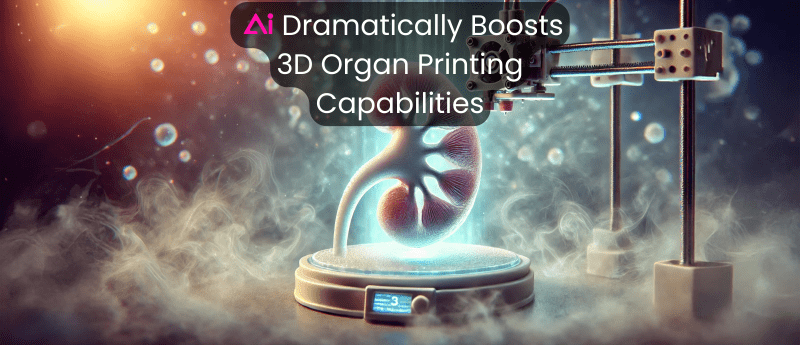AI Dramatically Boosts 3D Organ Printing Capabilities

Researchers at Washington State University (WSU; WA, US) have developed an AI technique that could revolutionize 3D organ printing, potentially bringing us closer to creating functional human organs in laboratories.
The study, published in the journal ‘Advanced Materials Technologies’, demonstrates how this AI approach can significantly improve the speed and accuracy of 3D organ printing while also holding promise for applications in electronics and wearable technology.
The Urgent Need for Innovation
According to Organ Donor.Gov, over 100,000 people in the United States are currently on the national transplant waiting list. This stark reality underscores the critical need for advancements in organ creation and transplantation technologies.
Bayesian Optimization: A Smart Approach to 3D Printing
The WSU team employed a technique called Bayesian Optimization to enhance the 3D printing process.
This AI method works by learning from each printing attempt and using that information to make intelligent decisions about how to adjust printing parameters for the next attempt.
The researchers applied this optimization to a specific type of 3D printing called Direct Ink Writing.
In Direct Ink Writing, a liquid material is extruded through a nozzle to build up an object layer by layer. The AI focused on optimizing three key parameters:
- Layer height: The thickness of each printed layer
- Nozzle travel speed: How quickly the printer nozzle moves
- Dispensing pressure: The force used to extrude the printing material
Balancing Multiple Objectives
Unlike previous approaches that often focused on a single aspect of print quality, the WSU team’s method simultaneously optimized multiple objectives:
- Printing time
- Porosity (the amount of void space in the printed object)
- Positive precision (over-extrusion)
- Negative precision (under-extrusion)
By balancing these factors, the AI aimed to produce organ models that were not only geometrically accurate but also efficient to print and structurally sound.
Results
The research team tested their approach by printing models of kidneys and prostates. Over the course of 60 iterations, the AI continuously learned and improved its printing strategy.
“You can optimize the results, saving time, cost and labor,” said Kaiyan Qiu, co-corresponding author and assistant professor in the WSU School of Mechanical and Materials Engineering.
The team observed significant improvements in all four objectives as the iterations progressed.
For example, in printing the prostate model, the time decreased from 67 minutes in the first iteration to 43 minutes by the 46th iteration. Similarly, porosity improved from -1.776g to -0.033g, indicating a much closer match to the ideal model’s mass.
Overcoming Challenges in 3D Printing
Developing optimal settings for 3D printing projects has long been a challenging and costly task for engineers.
Jana Doppa, co-corresponding author and Huie-Rogers endowed chair associate of computer science at WSU, highlighted this issue: “The sheer number of combinations is overwhelming, and each trial costs time and money.”
The Bayesian Optimization approach addresses this challenge by intelligently exploring the vast space of possible printing parameters, dramatically reducing the number of trials needed to achieve high-quality results.
Future Implications
While this research focused on creating organ models for surgical planning and medical device testing, the potential applications extend far beyond healthcare. The AI technique could be adapted to optimize 3D printing in other fields, such as:
- Electronics: Creating precise, customized circuit boards
- Aerospace: Printing complex, lightweight parts for aircraft
- Wearable technology: Producing flexible, personalized devices
However, the researchers note that further work is needed to adapt the technique to different materials and more complex organ structures.
Conclusion
This innovative use of AI in 3D printing represents a significant step forward in the field of biofabrication.
By improving the efficiency and accuracy of 3D organ printing, it brings us closer to the goal of creating functional organs for transplantation.
Moreover, the broad applicability of this optimization technique promises to accelerate innovation across multiple industries, showcasing the transformative potential of AI in manufacturing and beyond.
